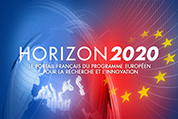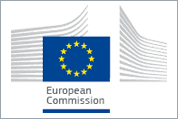ESR3.5: Bence SOLYMOSIValidating numerical modeling of marine seismic data

Bence SOLYMOSI:
I studied Earth Sciences BSc at Eötvös University in Budapest, Hungary between 2009 and 2012. During those 3 years I also completed the Geophysical specialization and wrote my thesis about archaeological magnetic survey method development.
Then I received my MSc degree in Exploration Geophysics at Eötvös University in 2014. My focus during the university years was mainly seismic data processing, although I gained experience with seismic interpretation, well logging and finite element modelling as well. Furthermore I did a lot of data collection, including electromagnetic, magnetic and seismic surveys.
Prior to beginning the PhD program, I worked as an R&D Geophysicist at SewerVUE Technology Corp., where my tasks included multisensory (GPR, lidar, sonar etc.) data processing, application development, prototype construction and carrying out pilot projects.
Main host institution:
Laboratoire de Mécanique et d’Acoustique, CNRS (Marseille, France)
Supervisor:
Nathalie Favretto-Cristini (favretto @ lma.cnrs-mrs.fr)
Co-Supervisors:
Paul Cristini (cristini @ lma.cnrs-mrs.fr), Dimitri Komatitsch (komatitsch @ lma.cnrs-mrs.fr)
Secondment institution:
Objectives:
One of the objectives of WAVES is to re-introduce the laboratory into the ideas-to-applications pipeline, so that experimental work serves to develop and test new theory or numerical modelling, addressing topics of current interest such as wave propagation and wave-based imaging in complex marine environments.
The PhD student, based at LMA Marseille but working in close collaboration with NTNU Trondheim, will first conduct laboratory experiment in a water tank to reproduce marine surveys, scaled to a much smaller volume/higher frequencies. Experiments will also be modelled numerically, reproducing the laboratory setup as accurately as possible using different numerical methods developed at LMA Marseille (typically, spectral-element method). Experimental complexities that must be honoured in the numerical domain include physical properties like viscoelasticity and anisotropy, as well as the presence of sharp obstacles with edges and vertices, providing interesting challenges for numerical techniques. The project will take advantage of recent advances in 3D printing technology to construct models with a high degree of complexity. The comparison of numerically modelled data with real traces will serve to emphasize among others the effect of the different sources of scattering. The laboratory database will be a tool of great value to evaluate the performance levels (ability, accuracy and computational costs) of numerical methods to model acoustic/seismic wave propagation and wave-based imaging in complex real environments.
Further information:
International conferences:
- EAGE (European Association of Geoscientists & Engineers), Vienna,Austria, 29/05-03/06/2016
- 16th Anglo-French Physical Acoustics Conference (AFPAC), Marseille, France, 23-25/01/2017 - oral presentation
Also in the section
Key Facts
- Coordinated by Université Pierre et Marie Curie
- 15 participating partners
- 6 European countries and the USA
- 15 trained fellows
- Project budget: 3 227 952.96€
- Project duration: 4 years
- WAVES is a European project funded by the European Union’s Horizon 2020 research and innovation programme under the Marie Slodowska-Curie grant agreement n° 641943.
Contact
Coordinator:
Lapo Boschi (lapo.boschi @ upmc.fr)
Project Manager
Fanny Schultz (fanny.schultz @ sorbonne-universite.fr)



